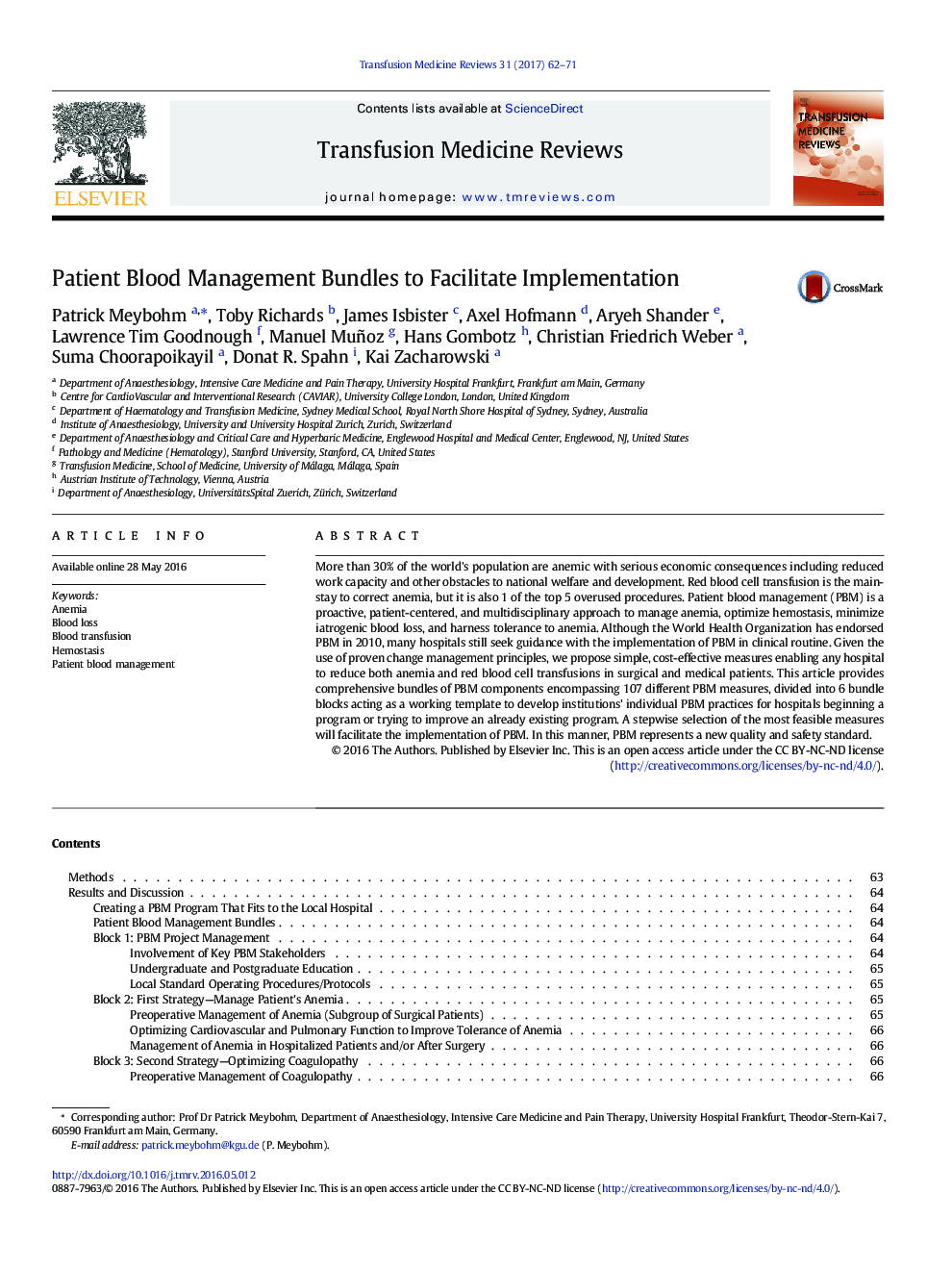| Article ID | Journal | Published Year | Pages | File Type |
|---|---|---|---|---|
| 5664790 | Transfusion Medicine Reviews | 2017 | 10 Pages |
â¢More than 30% of the world's population are anemic.â¢Incidence of anemia increases within the processes of care during hospitalization.â¢Patient blood management improves patient outcome at any point of hospitalization.â¢Hospitals still seek guidance with the implementation of PBM.â¢Patient blood management “bundles” approach serves as a new concept of “how to implement PBM”.
More than 30% of the world's population are anemic with serious economic consequences including reduced work capacity and other obstacles to national welfare and development. Red blood cell transfusion is the mainstay to correct anemia, but it is also 1 of the top 5 overused procedures. Patient blood management (PBM) is a proactive, patient-centered, and multidisciplinary approach to manage anemia, optimize hemostasis, minimize iatrogenic blood loss, and harness tolerance to anemia. Although the World Health Organization has endorsed PBM in 2010, many hospitals still seek guidance with the implementation of PBM in clinical routine. Given the use of proven change management principles, we propose simple, cost-effective measures enabling any hospital to reduce both anemia and red blood cell transfusions in surgical and medical patients. This article provides comprehensive bundles of PBM components encompassing 107 different PBM measures, divided into 6 bundle blocks acting as a working template to develop institutions' individual PBM practices for hospitals beginning a program or trying to improve an already existing program. A stepwise selection of the most feasible measures will facilitate the implementation of PBM. In this manner, PBM represents a new quality and safety standard.
